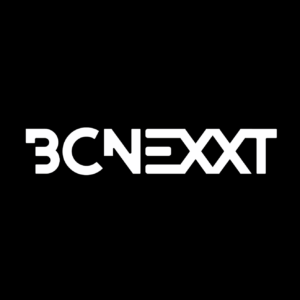
As we’ve seen with the global events of the last eight months, a world without video would be dreadful. Imagine this situation without global connectivity, or the sharing of information. 100 years ago, Spanish Flu devastated the world, and one explanation for that outcome was a lack of information. We have come a long way since then, and the media and entertainment world has played a vital role in dealing with the current pandemic.
The industry revolution that saw new antenna and satellite technology, along with more efficient compression techniques, enabled the number of television channels to grow from just a few channels per satellite to hundreds. This drastically increased payload, transforming the way we broadcast content.
From there we went into smaller antennas with higher gain, we improved the efficiency of the LNAs and LNBs. We began to accomplish cooler Kelvin degree temperatures, which in turn, allowed us to use smaller aperture antennas. Soon, we moved from seven meter antennas to fly-aways that were 1.8 meter and 2.4 meter. But those flyways still require a complex process of alignment.
It took time to align those uplinks because you had to have line of sight. If you had a building in front and the satellite you were trying to broadcast was behind that building, you couldn’t do it, or you had to use another satellite, so two satellites were required to accomplish the same broadcast.
The same was happening with microwaves as they went from analogue to digital. And now we could transport better quality with less power via a microwave. But again, the logistics to initiate a broadcast was highly complex, because you had to be able to see your tower. And sometimes you had to use relay stations, put one antenna on top of a building, another one down the endpoint linked to the one on top and to have a repeater to go over any line of sight obstacles. So, all that complexity was very demanding on hardware and implementation time.
In my view, since then, we have migrated from the RF tuner, to the IP tuner, so the infrastructure required is very different than when I started out in broadcasting. Then, in order to broadcast from an uplink, you needed 200-400 watts for a small fly-away uplink, or much higher amplifiers with kilowatts of power. Now, with a small encoder – 110 or 220 power input or with battery operated devices – you can reach the world.
On the receiving end, you would have a video operation center which would receive the feed from the satellite or microwave. Those video sources, that came through an antenna and were fed through a downconverter, would need to be viewed through an analogue monitor with audio output, which would be connected to a router. In order for the source broadcast to be recorded, that was done via video tape and later on solid-state drives.
Of course, once you throw editing into the mix, you have an even longer process, with the need to wait for this recording to complete, and then be passed over to the editor.
COVID COMPLEXITY
With coronavirus, we’ve seen more than ever the need for flexibility in broadcasting. The complexity of systems of the past do not allow for as much flexibility. Broadcasters across the world are beginning to recognize the importance of reducing complexity across networks, and the switch to IP transmission protocols is playing a huge role in this.
With the advanced technology available in an IP network operation center, we can receive a stream that is coming as one format; say SRT or RTSP or HLS. In real time, we can convert that protocol, which is useless and cannot be seen by an editor, live into a house format such as AVC, XDCAM, or ProRes, or so on allowing editing and subclipping to take place with a growing editing file.
Now, one stream-based source can be used without the need for complex hardware converters and transcoders, without waiting for the stream to finish recording. In an IP network operation center (IP-NOC) any received stream is immediately available and can be redirected in realtime through another network, or be sent to different servers, all while editors immediately start editing content.
Computers have become the monitoring tools, thanks to this path from analogue to digital, from radio frequency to IP facilitates a huge reduction in logistics, wires and hardware. You can input a video stream, record it, edit the content by many editors, and publish the video to many devices, all with the click of a button.
BREAKING THE PARADIGM
The Covid-19 pandemic has accelerated the adoption of IP solutions, with plans to switch to IP that were maybe a year or several out, being fast-tracked. Inability to access studios has meant new ways of working have had to be developed, and having access to IP networks has played a vital role, with signals getting switched in the cloud.
The paradigm of reaching remote space has been broken. Regardless of space, new protocols are bringing in very low latency; 30 milliseconds, which is almost unperceivable. And we are in the beginning of a new world which is going to dramatically change once again.
Across the world, we are seeing the deployment of 5G mobile networks. 5G will revolutionize our industry by carrying such huge bandwidth that we can transmit Ultra HD signals, multi cams, and yet still maintain tremendous quality all over. You just put up a 5G network and away you go.
This could be in a stadium, with the likes of the NFL already deploying microcells in stadiums, allowing users to view different segments of American Football games via different cameras and different sources.
As the deployment of this mobile technology grows and develops, the future of protocols such as HEVC and VVC will also improve. This will allow us to collaborate much better, to consume more diverse information. But it will also democratize broadcast access for our audiences.
Where we once had three or four channels, we have now moved to hundreds or even thousands of channels. But with IP, we will move to millions of channels, and this will help humanity to unite in sharing more information which can be propagated faster.
If we were to look back at those days of satellites carrying only a few channels, no-one would have predicted how far the industry has come. But, as 2020 has proven more than most years, broadcasters and media and entertainment companies continue to play a leadership role in technological advancements to the benefit of our society.
Switching to IP, and using IP NOCs, can drive us on even further.
Primestream CEO and president Claudio Lisman offers his vision for the future of IP in this Q&A, also from November’s Issue of TVB Europe.
WHAT ARE THE KEY AREAS OF FOCUS FOR PRIMESTREAM AT THE MOMENT?
During the coronavirus current pandemic, we realized the importance of remote collaborative workflows including the capability to produce live programs based on IP streams as the new sources that replaced the typical baseband signals. This presented a challenge to our industry which has had to adapt very fast to a new modality of work.
The incorporation of IP Cloud-based streams together with switching and producing in the Cloud had to be adopted quickly. Primestream Xchange Cloud and on-premise technology have been our main focus. Additionally, our award-winning Media IO server and Media IO Desktop solutions enable real time stream conversion from IP Stream such as SRT, RTSP, HLS into XDCAM, AVC, ProRes and HEVC. This format conversion takes place live and enables live Cloud editing and fast production turnarounds.
THE MEDIA AND ENTERTAINMENT INDUSTRY HAS SEEN A MAJOR SHIFT TO IP – WHAT ARE THE MAIN DRIVERS BEHIND THIS?
The fact that local operations had to migrate to remote operations had a significant impact on how a typical newscast or interview takes place. In order to enable this kind of operations, IP streams with low latency encoders as well as bonded cellular solutions had to be implemented quickly. Today we see how an adoption that would have taken a few years in the future has now taken place at a record time.
TELL US ABOUT THE IMPORTANCE OF IP NETWORK OPERATIONS CENTRES…
In a standard Network Operations Centre (NOC), you had to have your satellite, fiber optics or microwave sources, a receiver and from there, your baseband sources were wired to a routing switcher that routed your signals to a monitor and disk or tape recorder. Once the program recording was completed, the video file or tape was delivered to an editor who in turn would complete the edit and once the edit was completed the video was sent to a playout server for distribution.
An IP NOC has a completely different topology: first the sources are IP streams originating from encoders that transport the signal via IP and the Cloud. At the receive location (or multiple locations) the IP signal coming as an SRT, RTSP, HLS or MPEG encapsulated protocol is received by a computer and a browser. The same computer can facilitate the monitoring of a single or multiple IP signals, and routing is done via a network switch. In this topology, recording, editing while capturing and playout for distribution can be performed in the same device, therefore significantly reducing the logistics while facilitating new and advanced workflows totally based on the capabilities of the IP NOC.
HOW IS PRIMESTREAM HELPING TO FACILITATE ITS BROADCAST PARTNERS IN THEIR SHIFT TO IP?
Our award-winning Media IO Server and Desktop applications empower broadcasters with the ability to receive an IP source and transcode it in real time to any house production format. Basically, we can have an SRT source converted in real time into XDCAM, AVC, UHD, H.264, HEVC or ProRes, this allows the incorporation of IP streams into a full production environment in ways that were not possible before.
WHAT ARE GOING TO BE SOME OF THE KEY TRENDS YOU EXPECT TO SEE IN 2021 AND BEYOND?
I see a new way of operating in which the world moves more and more into IP remote production workflows and distribution methods. In the early ‘60s we only had over the air channels and there were only very few channels transmitted via radio frequencies in the VHF and UHF bands. If you wanted to view those channels, you needed a television with an RF Tuner and you could only see a program live. Today we have advanced to thousands of channels, distributed both via satellites, Cable and the internet, this is going to continue to expand with more diverse programming available and smarter audiences that will be addressed with more content via more devices. In essence, I believe that we are transitioning from an RF tuner to an IP tuner in which every computer or phone is a receiver powered by many different receiving browsers that act as our screen interfaces to the desired content.









